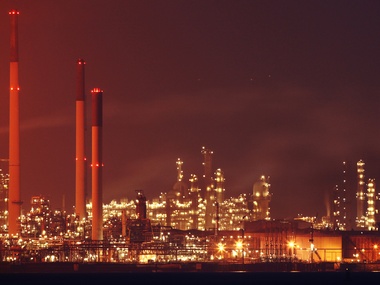The Central Electricity Regulatory Authority (CERC) has said consumers should prepare for a 15-20 percent increase in power tariffs every year, according to The Economic Times.
“If a state has not increased tariffs for the last 4-5 years, they cannot double them in one go,” Pramod Deo, chairman of CERC, told the newspaper .“With 2014 likely to be the year of national elections, we are looking at a tariff revision of around 25-30 percent every year in states where the revision has not been done on a regular basis. They will have to maintain that kind of hike every year, only then would they be able to make good the losses and bridge the gap.”
[caption id=“attachment_133437” align=“alignleft” width=“380” caption=“Reuters”]
 [/caption]
[/caption]
State electricity distribution companies, which are already reeling under losses of more than Rs 1 lakh crore, have been struggling to cope with escalating power supply costs and an inability to raise tariffs due to political pressure.
Those problems are slowing leading to a “boiling point” in the crisis-ridden sector.
Recently, ratings agency Icra removed the “stable” outlook from the ratings of Power Finance Corporation and Rural Electrification Corporation - the two biggest lenders to the power sector, saying that it was “unable to ascertain the outlook, in the absence of clarity on critical measures” to improve the situation for both state electricity boards (SEBs) and independent power producers (IPPs).
If the power sector’s lenders are being downgraded, in a manner of speaking, there will be a spillover effect on borrowers. In other words, the borrowing costs of SEBs could rise, especially at a time when banks are turning away from lending to the sector.
In fact, some banks, including State Bank of India and ICICI Bank, have already announced that they could restructure loans given to the power sector. Punjab National Bank revealed it had restructured Rs 2,500 crore of loans in the past quarter, of which Rs 1,800 crore was lent to Tamil Nadu State Electricity Board.
Allahabad Bank went a step further, announcing that it had decided to halt lending to power companies.Power sector advances constitute nearly 7.3 percent of total outstanding credit for banks, according to a Macquarie report.
According to ratings agency Crisil, SEBs in Tamil Nadu, Rajasthan, Uttar Pradesh, Bihar, Haryana, Madhya Pradesh and Punjab are the most vulnerable to the ongoing power sector crisis.
In 2010-11, SEBS lost a collective Rs 70,000 crore, according to Business Standard. This year they may lose less, but only because power tariffs have been raised. Over the past 18 months, according to Motilal Oswal Securities, 22 states have raised power tariffs.
A recent report in Business Standard suggested that state governments might be asked to write off Rs 1,00,000 crore (Rs 1 lakh crore) in state electricity board (SEB) losses in a bid to help these cash-strapped companies clean up their balance sheets.
In addition, the existing system of cross subsidies is also crying out for reform. Currently, industrial, agricultural and domestic users do not fully pay for the electricity they use. Agricultural and household consumers are subsidised at the cost of industrial users, who are high-volume users.
Firstpost has always said that the only way to fix the energy/power sector is to raise prices. “If not, power shortages will bring growth down further,” this article noted.
A 20 percent hike in power tariffs, however, will be seen as having a harsh impact on consumers, and the idea is, therefore, likely to run into stiff political opposition.
Chances are, if there is a hike, it will be much lower than 20 percent. But don’t expect that resolve all the problems of the power sector any time soon.
)